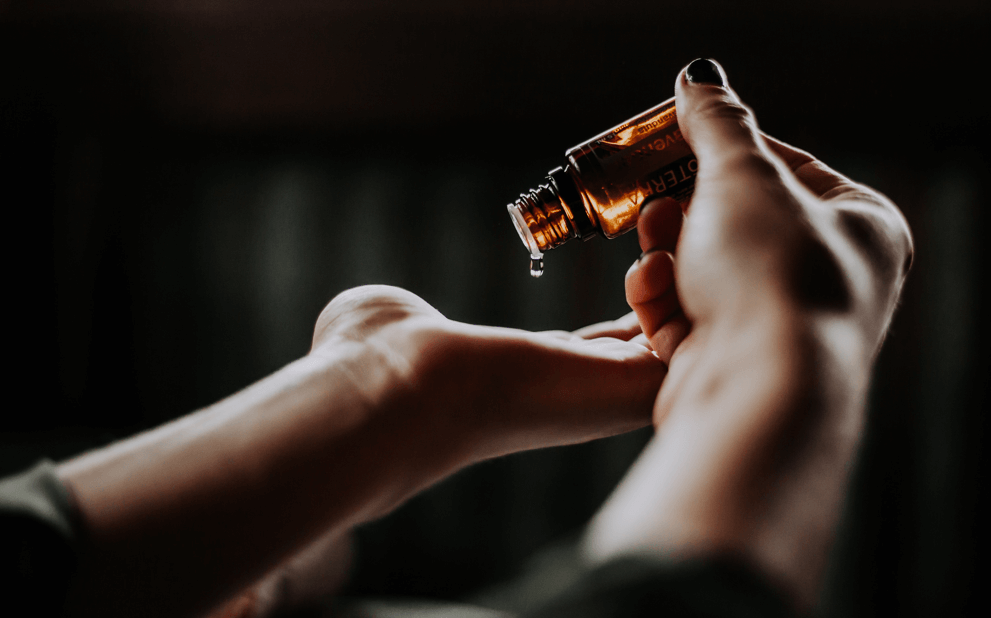What Does Sandalwood Smell Like? An Exotic Aroma Steeped in History

Sandalwood, a name that conjures up the image of ancient rituals, exotic perfumes, and holistic wellness; has been revered for over 4000 years.
This sacred tree, indigenous to the tropical regions of peninsular India, the Malay Archipelago, and Western Australia, has been mentioned in Sanskrit and Chinese manuscripts, testifying to its long and rich history.
Key Points
Sandalwood Basics:
- Sandalwood has a history of over 4000 years and is native to tropical regions in India, the Malay Archipelago, and Western Australia.
Sandalwood Scent:
- Sandalwood has a warm, woody, earthy aroma with balsamic, creamy, and spicy nuances.
- Indian Sandalwood has a sweet, creamy scent with floral notes.
- Australian Sandalwood has a woodier aroma with less sweetness.
- Sandalwood oil has a smooth, velvety texture and is often used as a base note in fragrances.
Sandalwood in Perfume and Aromatherapy:
- Sandalwood serves as a base note in perfumes, providing depth and longevity to fragrances.
- In aromatherapy, sandalwood essential oil is known for its calming effects, reducing stress and anxiety and improving sleep quality.
Gender Classification:
- Sandalwood is considered unisex in perfumery.
- Additional notes in fragrances can make a sandalwood-based perfume more masculine or feminine.
Uses and Benefits:
- Both Indian and Australian Sandalwood are used in aromatherapy, perfumery, and skincare.
- Indian Sandalwood is more commonly used in high-end perfumes and religious ceremonies.
- Australian Sandalwood has antimicrobial, antiseptic, and anti-inflammatory properties, making it suitable for skincare products.
- Sandalwood is used in incense, perfumes, cosmetics, and medicinal oils.
Indian Sandalwood vs Australian Sandalwood

Sandalwood comes in several distinct species but the two most commonly used commercially are Indian Sandalwood (Santalum album) and Australian Sandalwood (Santalum spicatum).
Both are highly valued for their aromatic heartwood and oil, but they exhibit significant differences in various aspects including scent.
Indian Sandalwood, often referred to as 'true' sandalwood, is native to the tropical regions of India, Indonesia, and the Malay Archipelago. It is a semi-parasitic tree and is renowned for its richly fragrant heartwood.
Australian Sandalwood is a more robust and non-parasitic tree, naturally found in the semi-arid regions of Western Australia. It produces a woodier aroma that is less sweet than that of its Indian cousin.
The Scent of Sandalwood

So, what does sandalwood smell like?
The scent of sandalwood is complex and multifaceted. It belongs to the woody fragrance family and is often compared to patchouli with which it shares similar creamy, sweet and earthy notes.
It exudes a warm and woody aroma with subtle balsamic, creamy, and spicy nuances. The overall sensory effect is both grounding and uplifting.
Indian Sandalwood is celebrated for its deep, sweet, and creamy scent with subtle floral notes. The subtle sweetness, with hints of floral undertones, adds an exotic appeal to this unique fragrance. This versatile scent is loved by both men and women.

Australian Sandalwood exhibits a bolder, woodier aroma with less sweetness.
When it comes to texture, Sandalwood oil has a smooth, almost velvety feel. It's not an overwhelming scent; instead, it has a soft, enveloping quality that creates a calming effect. This makes it a popular choice for creating a lasting base note in many fragrances, contributing to their overall depth and longevity.
As a base note, Sandalwood blends well with a wide variety of other notes. It harmonizes beautifully with other woods, resins, spices, and florals, making it a versatile ingredient in both men's and women's fragrances.
For instance, it can be paired with rose or jasmine for a softer, more feminine touch, or with vetiver and cedar for a more masculine edge.
Sandalwood in the Perfume Industry and Aromatherapy
The perfume industry has embraced sandalwood for its long-lasting, distinctive scent profile which is complex and is both versatile and universally appealing.
It serves as a base note in many perfumes, providing depth and longevity to other fragrances.
In traditional Ayurvedic medicine and aromatherapy, sandalwood essential oil is celebrated for its calming effects, promoting relaxation and mental clarity. It can be used to reduce feelings of stress and anxiety, as well as to improve sleep quality.
Is Sandalwood a Masculine or Feminine Scent?
Sandalwood's gender classification in perfumery is largely unisex, as its warm, creamy woodiness can complement both traditionally masculine and feminine scent profiles.
It's the additional notes that can tilt a Sandalwood-based fragrance towards being more masculine or feminine.
For women, a popular Sandalwood-based perfume is 'Samsara' by Guerlain. The fragrance combines Indian Sandalwood with jasmine and ylang-ylang, creating a sensual and sophisticated scent that is distinctly feminine.
On the other hand, for men, 'Santal 33' by Le Labo is a standout. This perfume blends Australian Sandalwood with cardamom, iris, and violet, resulting in an exotic, unapologetically masculine aroma.
However, many fragrances, like 'Tam Dao' by Diptyque, use Sandalwood as a central note and are marketed as unisex. This particular fragrance combines Sandalwood with cypress and myrtle, creating a scent that is appealing to a wide range of fragrance enthusiasts.
Sandalwood is sometimes paired with citrus scents such as grapefruit and lemon to add sweetness and to prevent their naturally invigorating scent become overpowering.

So, in conclusion, Sandalwood smells neither inherently masculine nor feminine. Its versatility and universal appeal make it a beloved ingredient in a wide array of fragrances, suitable for anyone regardless of gender.
Uses and Benefits

Both types of sandalwood have widespread use in aromatherapy, perfumery, and skincare. However, Indian Sandalwood, with its richer scent, is more commonly used in high-end perfumes and religious ceremonies.
Australian Sandalwood meanwhile, finds extensive use in commercial fragrances and skincare products due to its antimicrobial, antiseptic and anti-inflammatory properties.
Not only does sandalwood aid in treating acne and other skin irritations, but its natural properties make it an ideal ingredient for moisturizing and cleansing, making it a popular ingredient in many facial creams.
Sandalwood has been used in a variety of ways for centuries. It is used to make incense, perfumes, and cosmetics, as well as medicinal oils.
From its use in religious ceremonies to its current presence in the perfume industry, sandalwood has been appreciated for centuries for its sweet aroma and various therapeutic benefits. It's no wonder that it remains a cherished scent to this day!
Whether you're using it in a perfume, aromatherapy session, or skincare routine, sandalwood is sure to leave an enchanting scent by your side. Its versatility and long-lasting effects make it the perfect choice for any occasion.
Sandalwood can be found in many forms, such as essential oils, powder, chips, and paste. Whether you’re lighting up some incense or treating your skin to a luxurious cream or soap, you’ll find that sandalwood makes for an ideal choice.
Its calming and uplifting properties make it a great addition to any home or spa. So why not give it a try? You won’t regret it!

Active Ingredients
Indian Sandalwood's oil is characterized by high levels of alpha- and beta-santalol, compounds responsible for its distinctive fragrance and therapeutic properties.
Australian Sandalwood oil, while still containing these compounds, also features a unique component called farnesol, which has strong antimicrobial properties.
Cost, Availability, and Sustainability
Indian Sandalwood is more expensive and less available due to over-harvesting and slow growth rate. Conversely, Australian Sandalwood is more abundant and affordable, thanks to sustainable harvesting practices.
Both Indian and Australian Sandalwood have unique characteristics that make them valuable in different applications. Your choice between the two would depend on the specific requirements of aroma, texture, cost, and sustainability.
Genuine vs Synthetic Sandalwood
Given the high demand and the limited supply of genuine sandalwood, synthetic alternatives have flooded the market. To differentiate between the two, remember that genuine sandalwood has a deep, rich scent that lingers, while synthetic versions tend to have a sharper, more fleeting aroma.






